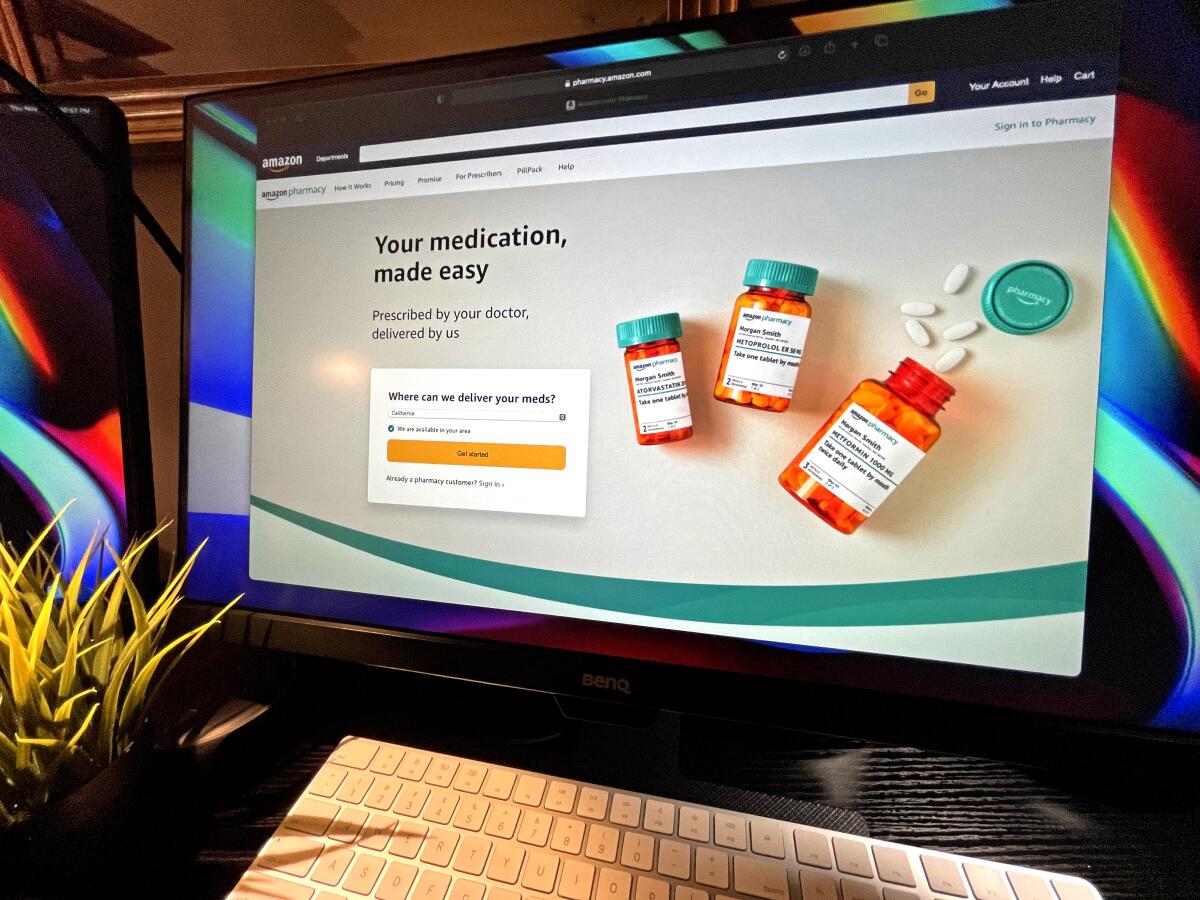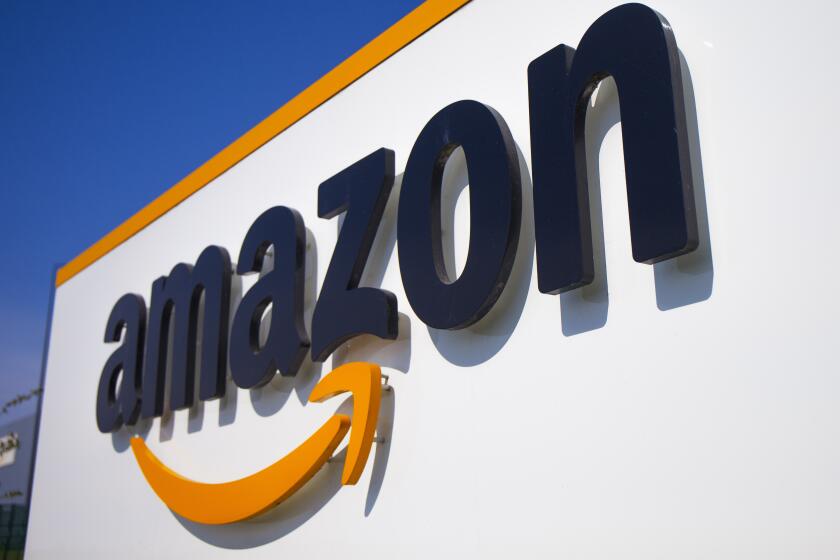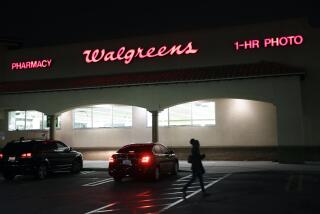Amazon’s pharmacy will offer same-day delivery in L.A. and NYC and plans to expand

Amazon will soon offer same-day delivery of several prescription medications in Los Angeles and New York, yet another example of the online shopping giant’s bet on consumers’ growing dependence on ease and speed.
As Amazon Pharmacy expands into the nation’s two biggest markets, Angelenos and New Yorkers will be able to order several common medications, including those used to manage high blood pressure, diabetes and the flu, online and have them delivered on their doorstep within hours, the company said in a statement Tuesday.
Amazon plans to offer the service in more than a dozen U.S. cities by the end of the year, the company said, noting that it already offers same-day medication delivery in a handful of cities, including Phoenix, Seattle and College Station, Texas, where it said deliveries are made within an hour by drone. Although the service won’t begin in the L.A. metro area until April, a company spokesperson said in an email that the service became available in San Bernardino, Riverside and Anaheim on Tuesday.
The company’s Amazon Prime service, which launched in 2005 and offers fast delivery of a wide variety of products, boasts more than 200 million members worldwide, but there is reason to expect consumers may be more reluctant about purchasing medications online.
The new Amazon Pharmacy offers customers convenience and potentially lower prices. But experts warn that users could be jeopardizing their privacy.
Although the concept of getting medications delivered, particularly by mail, isn’t new, it still accounts for a relatively small percentage of drug purchases. Amazon acknowledged that reality in its Tuesday announcement, which linked to a consumer survey from the global business consulting firm McKinsey & Co., which found that, in 2021, only 10% of prescriptions in the U.S. were purchased through mail-order or online pharmacies.
But the world of online medication sales is expanding rapidly.
One of Amazon’s biggest competitors in the pharmaceutical space, CVS, already offers speedy prescription delivery. And some digital prescription platforms, such as Santa Monica-based GoodRx and Cost Plus Drug Co., which was started by billionaire entrepreneur Mark Cuban, have already built significant consumer bases.
Fees the company collects from third-party sellers have risen for six years in a row, squeezing their margins.
In a video released Tuesday, the director of fulfillment for Amazon Pharmacy explained that a key feature of the company’s pharmacy, which launched in 2020, is that its algorithms show customers an estimate of the cost of medications with their insurance co-pay and without insurance.
“We’re again leaning into price transparency,” said Vin Gupta, the chief medical officer for Amazon Pharmacy. “It’s as affordable as possible.”
That’s probably a smart move by the company, said Pranav Patel, a former researcher at the University of Toledo who has studied the field of pharmacy extensively.
When it comes to purchasing medications, he said, many Americans care primarily about price transparency, and “convenience is just good PR.”
“It’s about, ‘Am I paying the fair price for the drug?’” said Patel, who worked on a study that found that at least 1 in 5 prescriptions for many commonly prescribed generic medications would have been cheaper if the person had paid out of pocket and used discount cards from places such as Amazon and GoodRx instead of going through their insurance plans.
In its Tuesday announcement, the company said that medication delivery methods would be tailored to each area.
In the Greater Los Angeles region and across other suburban stretches, it plans to use Rivian electric vans as well as other vehicles to make deliveries; medications arriving on doorsteps in Manhattan could be transported by workers on e-bikes.
More to Read
Inside the business of entertainment
The Wide Shot brings you news, analysis and insights on everything from streaming wars to production — and what it all means for the future.
You may occasionally receive promotional content from the Los Angeles Times.













